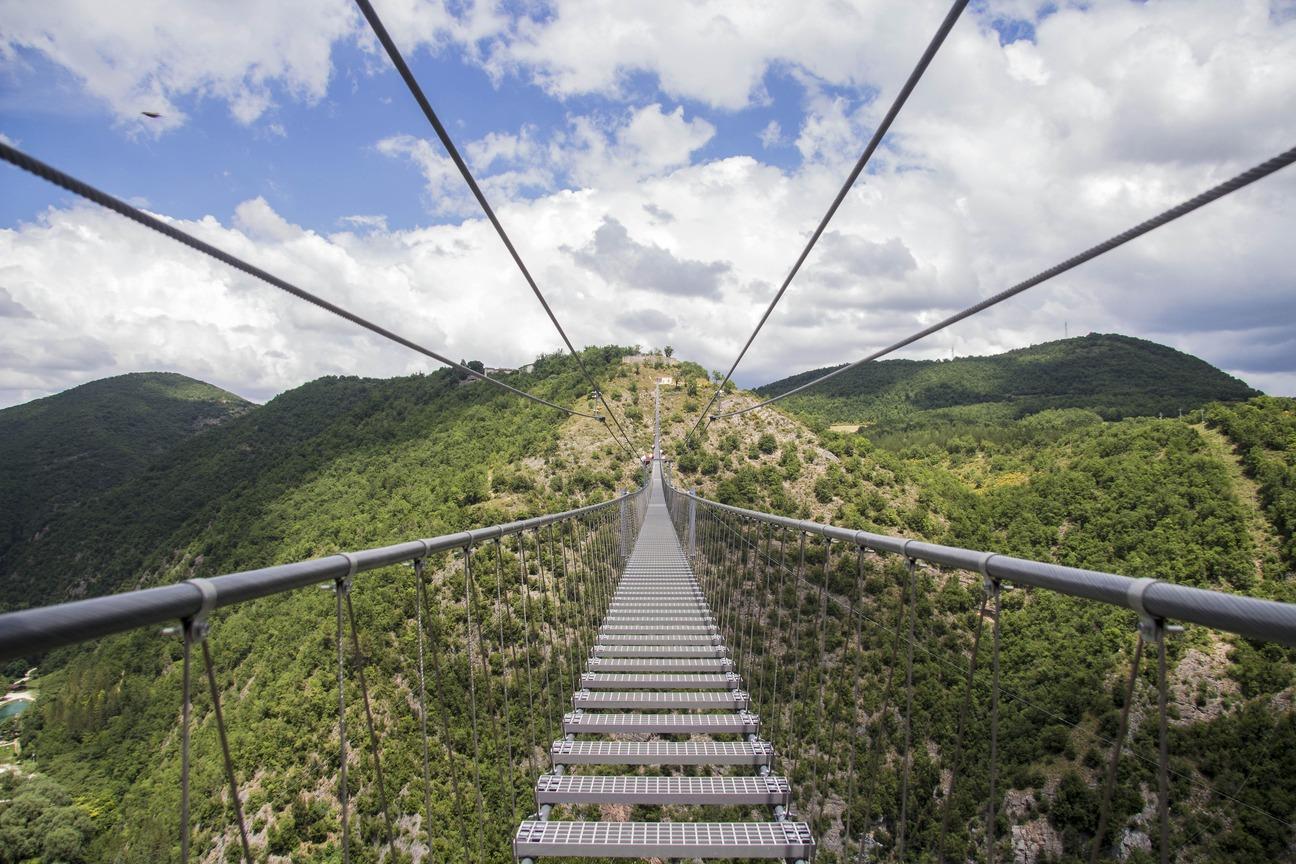By Federico Donti
It is clear that the attraction of the moment in Umbria is the Tibetan bridge of Sellano, a brilliant idea made possible thanks to the foresight and determination of the municipal council; in this issue of Valley Life we will tell you about this jewel forged by the waters and set among rocks, woods and crystalline rivers: Sellano, with its stone villages (which comes from the local quarries) clinging to the mountains of the Umbrian Apennines.
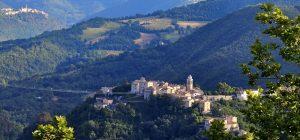
An area rich in lush woods, flora and wildlife, mushrooms, truffles and clear waters, where the village of Sellano stands out, whose origins date back to Roman times, a time when it must have had the features of a small agricultural village (vicus). But in its current appearance it turns out to be entirely late medieval. Built on a land of passage, in a dominant position over the valley of the Vigi river, in the Middle Ages the village of Sellano played a central role in the control of the territory.
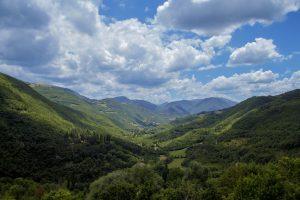 Covered with meadows and green woods, its territory is inhabited by many animal species, including wild boars, foxes, porcupines, whip snakes, badgers, hares, martens, roe deer and is ‘flown’ over by grey herons, blackbirds, green woodpeckers, peregrine falcons, buzzards and kites; also rich in paths, the mountain peaks are often flattened and, in the summer, the air smells of aromatic herbs and wild flowers.
Covered with meadows and green woods, its territory is inhabited by many animal species, including wild boars, foxes, porcupines, whip snakes, badgers, hares, martens, roe deer and is ‘flown’ over by grey herons, blackbirds, green woodpeckers, peregrine falcons, buzzards and kites; also rich in paths, the mountain peaks are often flattened and, in the summer, the air smells of aromatic herbs and wild flowers.
There are several theories that revolve around the origin of the name of Sellano. According to some scholars, the term derives from the Roman tribe of the gens “Suilla” or the “Syllinates”, named by Pliny in the Naturalis Historia. According to others, from the name of the Roman leader Lucius Cornelius Sulla, who found refuge in these areas following the civil wars.
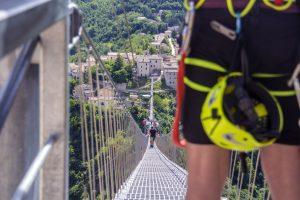 The most modern tradition, however, derives the name from the term “saddle”, understood as “pass”. The latter hypothesis is reflected in the municipal coat of arms, depicting the Archangel Michael supported by a saddle.
The most modern tradition, however, derives the name from the term “saddle”, understood as “pass”. The latter hypothesis is reflected in the municipal coat of arms, depicting the Archangel Michael supported by a saddle.
We are in an area where the richness of the food and wine offer is one of the flagships of Umbria. The dense vegetation of the Apennines has favoured the exploitation of the products offered by the undergrowth: truffles, porcini mushrooms, chestnuts and game are the main raw materials used in regional and local cuisine.
Among the specialties there are also trout from the Vigi river, the products of the ancient art of butchery and the inevitable olive oil, the basic ingredient of all recipes. Some typical dishes not to be missed are: Fojata, the savoury pie of Sellano (an ancient recipe typical of the Valnerina) and ‘Attorta’, the traditional Umbrian dessert with a circular, snake shape.
The festivals represent the most genuine and authentic face of Sellano made up of events and historical re-enactments that have their roots in centuries-old traditions, in the peasant and mountain past of this village.
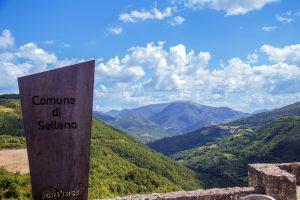 Returning to the attraction of the moment, the Tibetan Bridge connects Sellano, to the hamlet of Montesanto; in this difference in height of 68%, a 517.5 meter long path develops at a height of 175 meters above the valley of the Vigi river and 1023 steps are needed to cross it! Together with the Tibetan bridge of Arouca (516 meters, in Portugal) it is the highest in Europe.
Returning to the attraction of the moment, the Tibetan Bridge connects Sellano, to the hamlet of Montesanto; in this difference in height of 68%, a 517.5 meter long path develops at a height of 175 meters above the valley of the Vigi river and 1023 steps are needed to cross it! Together with the Tibetan bridge of Arouca (516 meters, in Portugal) it is the highest in Europe.
It starts directly from the historic centre of Sellano and, once you arrive in Montesanto, there is a shuttle service or the path that leads directly back to the arrival.
We conclude by pointing out that one of the strengths of the village of Sellano is its geographical position: within a radius of 50 km there are all the most famous destinations in Umbria, a region that in addition to being rich in history and culture, offers natural views of rare beauty: from the Castle of Postignano (Sellano) to Assisi (Umbrian city Unesco World Heritage Site) up to the villages of Spello, Foligno and Spoleto.
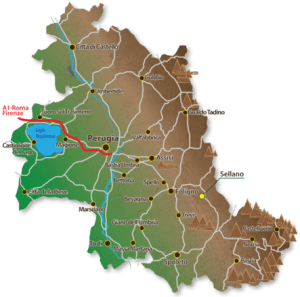
Info:
Visit Sellano
Official tourist portal of the City of Sellano
Piazza Vittorio Emanuele, 7 – Sellano (PG)
